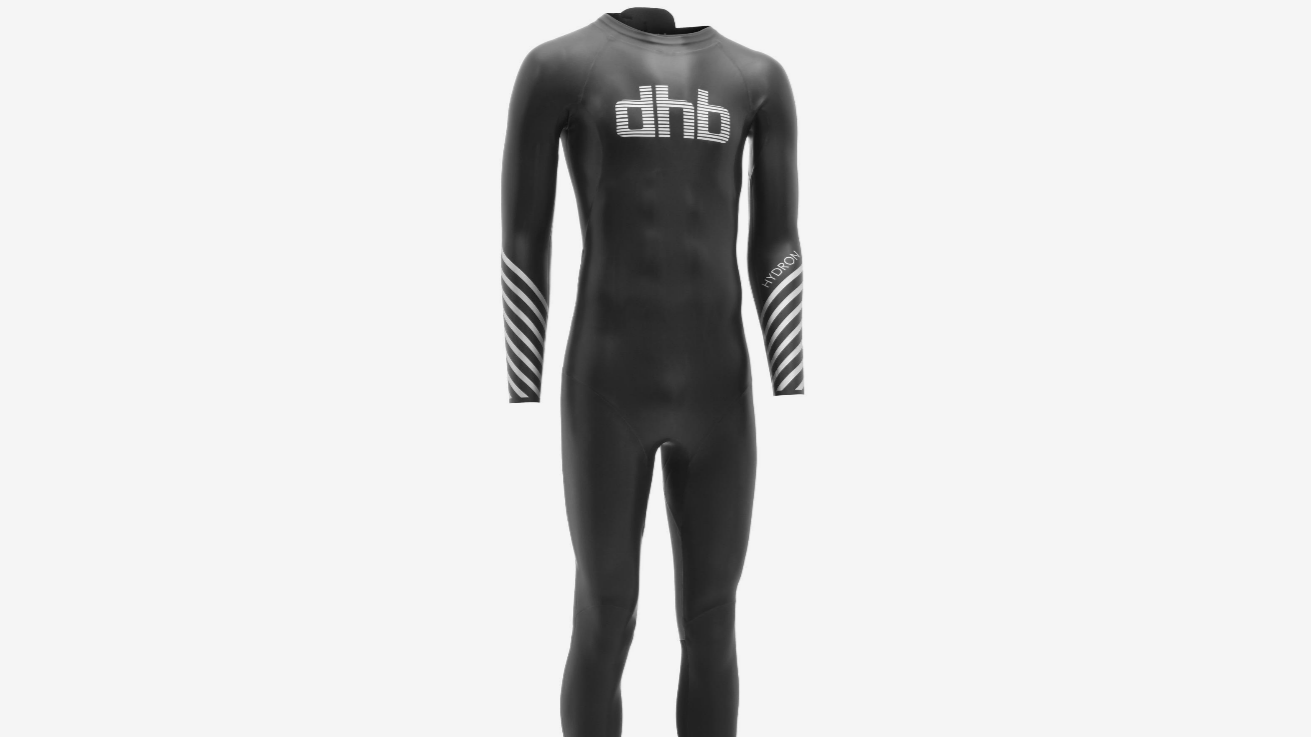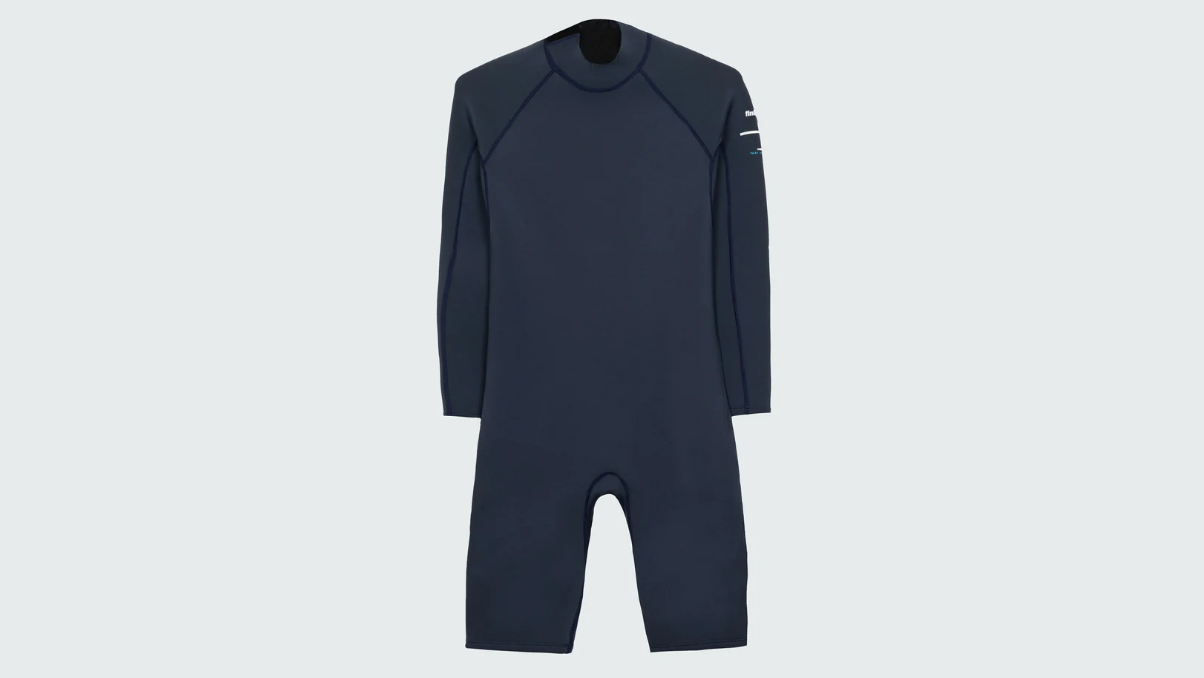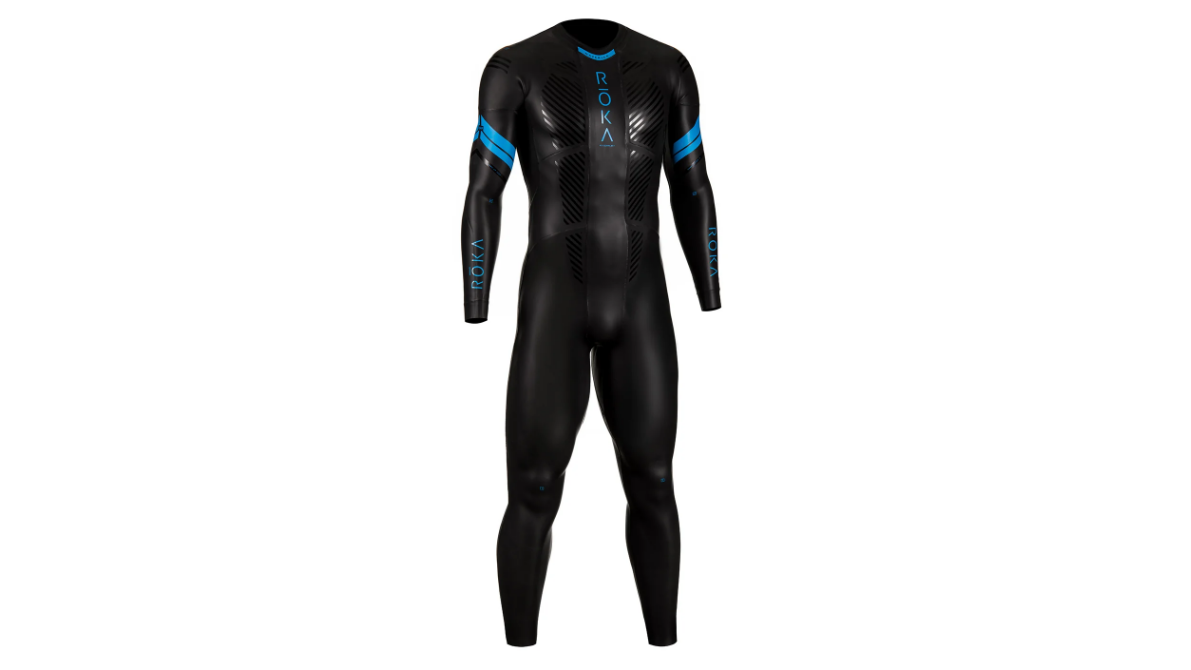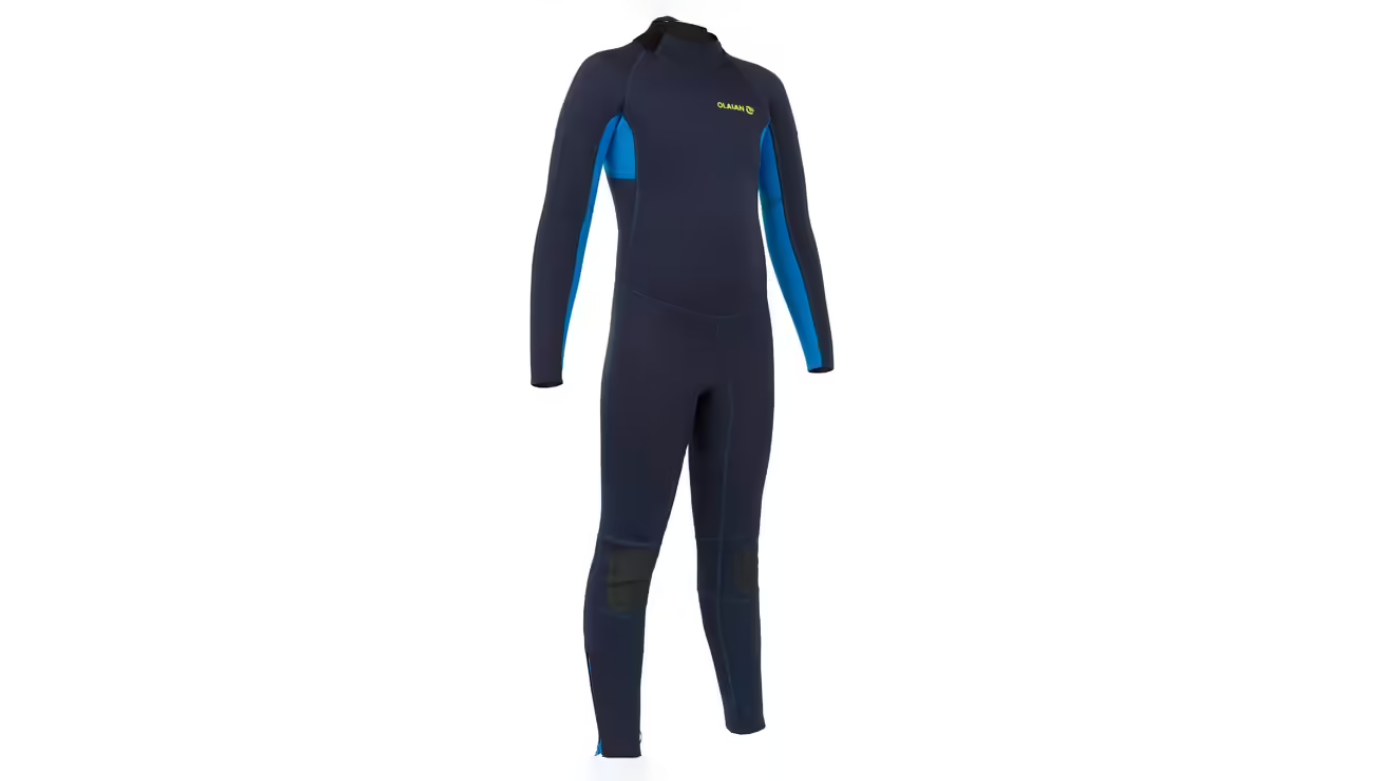To help us provide you with free impartial advice, we may earn a commission if you buy through links on our site. Learn more
- Best wetsuit: At a glance
- How to choose the best wetsuit for you
- The best wetsuits to buy in 2023
- 1. dhb Hydron Wetsuit 2.0: Best wetsuit for outdoor swimmers
- 2. Olaian Surfing 4/3mm Wetsuit 100: Best budget surfing wetsuit
- 3. O'Neill Hyperfreak Fire 4/3 Chest Zip Wetsuit: Best surfing wetsuit
- 4. Picture Equation 3/2 Flex Skin Front Zip: Best wetsuit for comfort
- 5. Finisterre Nieuwland 2e Yulex Long Sleeve Shorty Wetsuit: Best Eco-Friendly Wetsuit
- 6. Roka Maverick Comp II: Best wetsuit for wild swimming and triathlons
- 7. Olaian Kids' Full WetSuit 100 2/2: Best affordable wetsuit for children
- 8. ITIWIT Canoe Kayak and Stand-up Paddle 2mm Wetsuit: Best value wetsuit for paddling and water sports

Fancy a spot of open-water swimming? Maybe you’ve become obsessed with stand-up paddle boarding? Or perhaps you’re hoping to get gnarly in the surf? However you enjoy the open waters, a good quality wetsuit will keep you warmer for longer, which means more fun for you and the kids.
But choosing the right wetsuit isn’t quite as simple as buying a new swimsuit – the time of year, the weather conditions, and the water temperature all need to play a part in your decision-making. Not to mention that what you intend to do will also need to factor into how thick the wetsuit should be. Getting the right fit is also important: too tight and you’ll be restricted, too loose and the wetsuit will actually make you colder by filling up with water (also known as flushing).
Whatever your needs, our buying guide covers all the important questions you should consider before you make your purchase. After that, we’ve put together a list of the best wetsuits to buy, from full-body winter options to shorties for the warmer months.
READ NEXT: The best swimming goggles to buy
Best wetsuit: At a glance
- Best value for outdoor swimming: Dhb Hydron 2.0 | Check price for men’s | women’s
- Best budget surfing wetsuit: Olaian Surfing 4/3mm Wetsuit 100 | Check price for men’s | women’s
- Best wetsuit for comfort: Picture Organic Equation 3/2 Flex Skin Front Zip | Check price
- Best eco-friendly wetsuit: Finisterre Nieuwland 2e Yulex Long Sleeve Shorty Wetsuit: Check price for men’s | women’s
- Best affordable wetsuit for kids: Olaian Kids Full Wetsuit 100 2/2mm | Check price
How to choose the best wetsuit for you
Do I need a wetsuit?
Strictly speaking, no you don’t. Wild-swimmers and cold-water therapy enthusiasts may even scoff at the idea. However, should you not be gifted with such resilience, a wetsuit can make the experience of getting into cold water much more bearable. And however hardy you think you are, the added warmth provided by a wetsuit can also help you to spend longer periods of time in the water.
How do wetsuits work?
As the name implies, wetsuits are not waterproof and are designed to get… well, wet. Made from stretchy neoprene – although alternative, more eco-friendly options are available (see below) – wetsuits keep you warm thanks to bubbles in the material that trap warm air, and thermal linings. When you enter the water, a small layer fills the suit and is then heated up by your body temperature to act as more insulation. This is why the fit is so important – if your suit is too baggy, too much water will flush through, making you cold.
What types of wetsuit are there?
Before we even get on to sizing and thickness, it’s worth describing a few of the different types of wetsuit here:
- A full wetsuit is what most people picture when talking about wetsuits. They’re designed to cover your full body, with long sleeves and full-length legs. For full coverage, you can also get hoods, gloves and boots to keep you warm in the coldest of conditions.
- A “shorty” refers to a wetsuit with the arms and legs cut short. It’s a good choice for the warmer months when the sea can still be cool, but not so cold that you need a full wetsuit.
- A “long john” wetsuit is basically a sleeveless wetsuit. Meanwhile, a “short john” is the same but with short legs too – like a shorty, but with no sleeves at all.
- For use in warmer climates, there are wetsuit vests and wetsuit jackets, which offer upper-body protection only.
- Specific swimming wetsuits are also available, which feature extra layers of neoprene in specific areas to increase buoyancy in the water. These can be found in full, sleeveless or shorty designs.
What do I need to consider before buying a wetsuit?
Sizing: One of the most important things to realise when buying a wetsuit, is that they’re universally difficult to get in and out of. It takes time, patience and, when the neoprene is thick, plenty of muscle. Modern super-stretchy materials have improved things in this regard, but remember that the suit you choose has to fit like a second skin – it will need to be tight, so avoid sizing up unless the brand instructs you to. Also, bear in mind that wetsuits will relax after a few wears.
The Wetsuit Centre has an in-depth sizing guide to help you out here, but it’s also important to check the manufacturer’s size charts, too.
Thickness: Measured in millimetres, the thicker the wetsuit, the warmer it will be. So, you should think about what time of year you plan to be out. Most wetsuits use at least two different thicknesses of neoprene – shown as 2/3mm or 3/4mm, for example – where the thicker sections are used around the torso to help maintain a higher body temperature. Swimming-specific wetsuits are often very thin, especially around the shoulders where maximum movement is needed.
As a general rule for water sports in the UK, it’s best to opt for a 4/5mm wetsuit when water temperatures are between 10 and 15°C, while a 3mm suit is more suitable towards the autumn when water temperatures should be around 15 to 17°C. In colder conditions, around 5°C, you should aim for something really thick, like 7mm – best of luck if you do!
You can easily check the current and average sea temperatures in the UK and around the world here.
Don’t forget, you can also get too hot in a wetsuit. During our August testing, we found a 3mm wetsuit was simply too hot to use on an inflatable obstacle course on an inland lake, but was ideal in the sea.
Entry system (zips): Most wetsuit brands offer a choice of either chest or back zips. Back zip suits are the easiest to get into, offering more wriggle room for broader-shouldered wearers. However, that long zip can restrict the flexibility of the suit a little, which is why many serious surfers now wear wetsuits with chest zips. These feature a short, horizontal zip across the front of the wetsuit, attaching a panel which goes over your head. While there’s a knack to getting these on – yes, they’re a pain to begin with – once you’re in, the closer-fitting neck minimises flushing and doing away with the back zip improves flexibility and range of motion. Some water sports brands also offer wetsuits with long front zips that make it easier for you to regulate heat when you’ve been paddling a kayak or SUP. Finally, zip-free wetsuits are also available, but they’re typically only found at competition level, they’re the most flexible option but they’re even harder to get on or off, and the larger shoulder opening increases the risk of flushing.
How much should I spend?
You’ll find yourself paying more or less depending on the type of wetsuit you opt for and how thick you want the material. More expensive wetsuits typically incorporate the latest eco-tech and the stretchiest materials, and are likely to feature better quality construction. But while some high-end winter options may cost closer to £1,000, a full adult wetsuit on a budget could cost as little as £80.
However, bearing in mind that very cheap neoprene can be surprisingly stiff, it might be worth spending a bit more to save having to wrestle yourself – and possibly the kids – into them every time.
While none of the options on our list quite reach the top end of the price spectrum, it’s a good idea to invest a little more if you’re going to be engaging in watersports or open-water swimming on a regular basis. But if you’re only likely to have the occasional cold-water dip, or just need something for a summer surfing holiday, there are still some very affordable entry-level wetsuits, which we’ve included below.
Is neoprene eco-friendly?
Sadly, traditional neoprene is derived from fossil fuels and thus the very opposite of eco-friendly. It’s a problem surfers and outdoor enthusiasts have struggled with for years, but, thankfully, greener and more sustainable options are starting to become widely available.
There are generally two eco-friendly options as an alternative to traditional neoprene. The first is limestone neoprene (also known as Yamamoto neoprene) which swaps petroleum-based chemicals for calcium carbonate from limestone. Although not completely eco-friendly, limestone neoprene is easy to store and durable, and arguably better than traditional neoprene in that it’s warmer, lighter, more flexible and absorbs less water.
The second alternative to neoprene is the greenest: Yulex. This 100% plant-based natural rubber produces 80% less CO2 emissions than neoprene, and its production requires no mining or drilling, or non-renewable resources like petroleum or limestone. It’s also impressively stretchy and performs as well as neoprene, but, you guessed it, choosing it will cost you more.
Also, look out for the use of recycled materials – plastics and even recycled tyres or crushed oyster shells – which will help minimise your wetsuit’s impact on the planet.
The best wetsuits to buy in 2023
1. dhb Hydron Wetsuit 2.0: Best wetsuit for outdoor swimmers
Price when reviewed: From £70 | Check price for men’s | women’s from Wiggle

dhb’s popular Hydron wetsuit is designed as an entry-level suit for newcomers to open-water swimming or triathlons. Given the low price, it has great buoyancy, flexibility and reduced drag, and – mercifully – it’s also easy to get on and off.
The suit is 2/3mm thick, with the thickest areas at the front torso and hips, while the areas around the arms, back and rear of the legs are thinner to allow for greater range of movement. If you’re struggling with the sizing, Wiggle provides very helpful size charts, with both imperial and metric measurements, and up to nine options to cover most body shapes.
Key features – Main materials: Neoprene, polyamide; Sizes: XS-XXL; Thickness: 2/3mm; Best suited for: Open-water swimming; Other colours available? No
2. Olaian Surfing 4/3mm Wetsuit 100: Best budget surfing wetsuit
Price when reviewed: £90 | Check price of men’s | women’s from Decathlon

Made from 4/3mm thick neoprene, this wallet-friendly wetsuit is designed for water temperatures between 12°C and 17°C. It’s not recommended for surf sessions lasting more than an hour, and definitely not suitable for winter wave riding, but the long protected zip and fairly generous stretch means it is easier to get on than most budget wetsuits, although you might want to size up if you find battling to get into a suit particularly exhausting. It’s an ideal option for surfing beginners.
As we’ve come to expect from Decathlon, the pricing is generous and you get more than you would expect, but, as a result, it often sells out during peak times, so be quick or plan ahead. Decathlon also offers a wide range of wetsuits, with the Olaian Men’s Surfing Wetsuit 900 4/3 mm Neoprene offering higher quality performance and fit for longer surfing sessions, up to three hours.
Key features – Main materials: Neoprene; Sizes: Women XS-XL, men XS-L; Thickness: 4/3mm; Best suited for: All-round/surfing; Other colours available? No
3. O’Neill Hyperfreak Fire 4/3 Chest Zip Wetsuit: Best surfing wetsuit
Price when reviewed: £378 | Check price at Blue-Tomato

The O’Neill Hyperfreak range of wetsuits is popular across the world thanks to the ridiculous levels of stretch in their neoprene. However, this updated version takes things a step further with their new TechnoButter 4 neoprene which, combined with a graphene-infused liner, manages to be lightweight, stretchy and remarkably warm.
It’s a hi-tech and sustainable offering without an enormous price tag. It’s made using recycled oyster shells, car tyres and plastics, the lamination process is solvent-free, and all of O’Neill’s neoprene is limestone- rather than oil-based. It’s also quick to dry, something that’s often overlooked when choosing a suit.
In the water, it’s toasty warm, assisted by the chest zip and the high neckline which reduces the chance of cold water flushing through your suit. There’s an excellent range of motion in the arms, for paddling, and the padded knee zones are a welcome addition. The seams are also double-taped for added durability so when combined with the graphene, you can expect this suit to last for many seasons.
Key features – Main materials: Limestone Neoprene; Sizes: Women 2-12, men XS-XXL; Thickness: 4.5/3.5mm; Best suited for: Surfing; Other colours available? Black/red, black/blue
4. Picture Equation 3/2 Flex Skin Front Zip: Best wetsuit for comfort
Price when reviewed: €330 (approx. £282) | Check price of men’s | women’s from Picture

Although it’s also available in a highly recommended and warmer 4/3mm design that will extend your surf season, we’ve chosen this 3/2mm chest-zipper design because it’s lightweight and has a surprising amount of stretch. It also features a 3D knitted liner that’s not only soft and comfortable against the skin but makes it so much warmer than you’d imagine – it’s rated for temperatures between 13°C and 18°C, which makes it ideal for using in UK seas from late spring through to autumn.
Importantly, it’s also one of the most eco-conscious options on the market, thanks to Picture’s dedication to sustainability and eco-design, and their use of Eicoprene. This non-petroleum-based neoprene alternative is made from a mix of oyster shell powder, limestone, and recycled tires. The seams are even taped using solvent-free glue.
Chest zip wetsuits are harder to get on than back-zipped designs, but once in this suit, you’ll be comfortable all day. What’s more, they’ve included some double-thickness rib protectors that really help with bruising, and might even trick strangers into thinking you’ve got abs.
Key features – Main materials: 78% Eicoprene; Sizes: Women 4-12, men S-2XL; Thickness: 3/2mm; Best suited for: Surfing; Other colours available? Dark army green (men), dark blue (women)
5. Finisterre Nieuwland 2e Yulex Long Sleeve Shorty Wetsuit: Best Eco-Friendly Wetsuit
Price when reviewed: £165 | Check price at Finisterre

We tested the long-sleeved shorty version of this wetsuit, but Finisterre also sells wetsuits for both men and women in a range of thicknesses and designs, including a long-sleeve top that’s great for paddle boarding. This 2mm thick shorty design is ideal for summer surfing, general messing about in the waves, or wild swimming. Having your calves exposed may be a shock to the system initially, but you soon adapt and your torso stays toasty.
However, the main reason to highlight the Nieuwland collection is that they’re made with Yulex, the greenest alternative to neoprene available. Made from this natural rubber, along with recycled spandex and polyester, it has a generous four-way stretch and looks great. Yulex feels almost identical to neoprene, though we did notice it was extremely tight to begin with, compared to a synthetic suit, but Finisterre assures us it will loosen after a few wears.
Key features – Main materials: Yulex natural rubber, recycled polyester, recycled spandex; Sizes: XS-2XL; Thickness: 2mm; Best suited for: summer swims and surf; Other colours available? Dark ozone
6. Roka Maverick Comp II: Best wetsuit for wild swimming and triathlons
Price when reviewed: £475 | Check price of men’s | women’s from Roka

Amazingly, Roka sells this premium wetsuit as an ‘entry level’ option, but unless you’re a professional triathlete, or have plans to swim the Atlantic, this has all the features you need to improve your outdoor swims.
Firstly, this IRONMAN race-approved suit is shaped to fit the body when swimming, rather than on dry land, so there’s excellent movement in the shoulders and it’s actually at its most comfortable with your arms up. It sounds like a bit of a gimmick, but, trust us, it works. As does the Hydrophobic Nano Coating that reduces surface drag and helps you cut through the water faster. Finally, Roka has incorporated thicker strips of 5mm neoprene down the centre line which boosts buoyancy brilliantly, keeping you in an ideal swimming position even when you’re exhausted.
Unfortunately, choosing such an ingenious design will hurt your wallet. It’s also one of the trickiest wetsuits to get on – you will need help with the zip, and the thin portions of neoprene are fairly delicate, so be careful if you have long nails – but, once you’re in it, you’ll genuinely feel the difference in your swimming while also keeping warm.
Key features – Main materials: Yamamoto limestone neoprene; Sizes: XS-XXL; Thickness: 1:3:5mm; Best suited for: swimming/triathlon; Other colours available? No
7. Olaian Kids’ Full WetSuit 100 2/2: Best affordable wetsuit for children
Price when reviewed: £40 | Check price at Decathlon

Olaian’s beginner wetsuit is the perfect way to introduce your kids to water sports. It’s not designed for use in particularly cold water, but it’s ideal for water between 17°C and 21°C and sessions lasting up to 1 hour. So it’s a great choice for surfing lessons or the first time out snorkelling. It’s also designed to allow your child to wear a UV sun-protecting top under the suit.
The suit is made with convenience in mind – with zips on the ankles and up the back – keeping things simple when it comes to getting in and out of it. Comfort is also a strong factor here, with the smooth lining inside the collar, the lack of seams under the arm, and the padding in the knees all working together to keep your child focused on the activity, not the suit.
The stitch-bonded 2mm neoprene does a good job keeping the water out, though it is worth bearing in mind that the effectiveness of this will be heavily influenced by the tightness of the suit. With age ranges from 6 to 14 listed on the website, you have plenty of choice in sizes to ensure that your child has the best experience out on the water.
Key features – Main materials: Polyester; Thickness: 2mm; Best suited for: Children; Other colours available? Navy blue, Pacific blue, lime green
8. ITIWIT Canoe Kayak and Stand-up Paddle 2mm Wetsuit: Best value wetsuit for paddling and water sports
Price when reviewed: From £40 | Check price of men’s | women’s from Decathlon

Yet another great value option from the world’s largest outdoor brand. However, this time Decathlon has designed a suit specifically for kayaking, canoeing, and stand-up paddle boarding. The sleeveless design simply makes paddling a whole lot easier – and gives you a chance to avoid those t-shirt sleeve tan lines – while the unusual front zip opening will help you to regulate your temperature when the sun shines and you’re paddling hard.
It’s not designed for winter water, but the 2mm stitched neoprene construction will take the edge off on cooler days and, hopefully, minimise the shock when your balance fails you. It’s also surprisingly cushioning, helping to reduce the impact on your bum or knees, and there are clever drainage holes behind the knees to help water escape quicker when you’re tethered to a leash.
Key features – Main materials: Neoprene; Sizes: XS-2XL; Thickness: 2mm; Best suited for: Canoe/paddleboards; Other colours available? No







